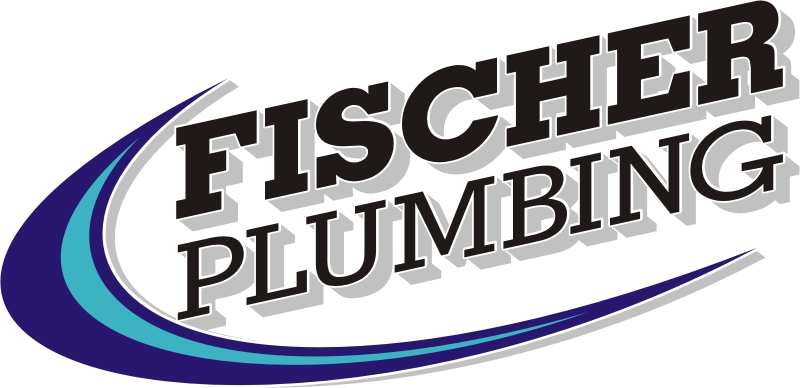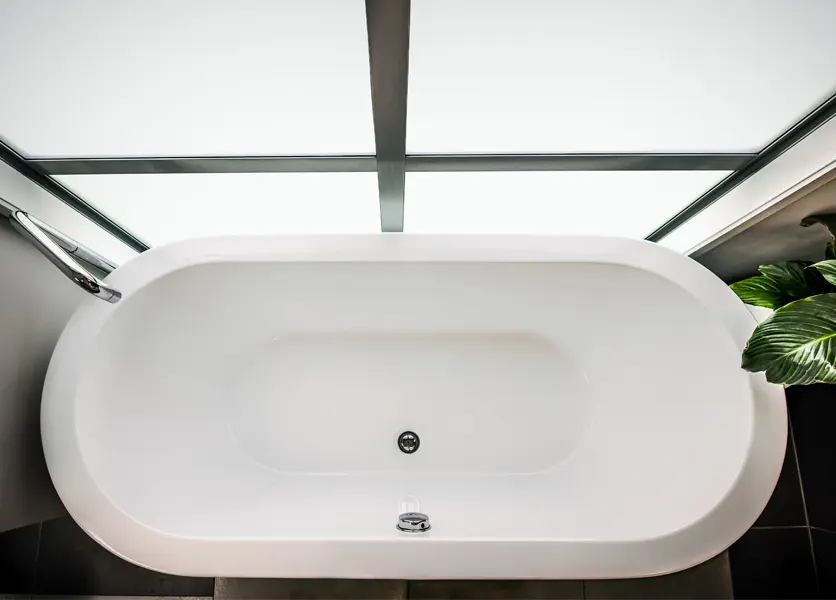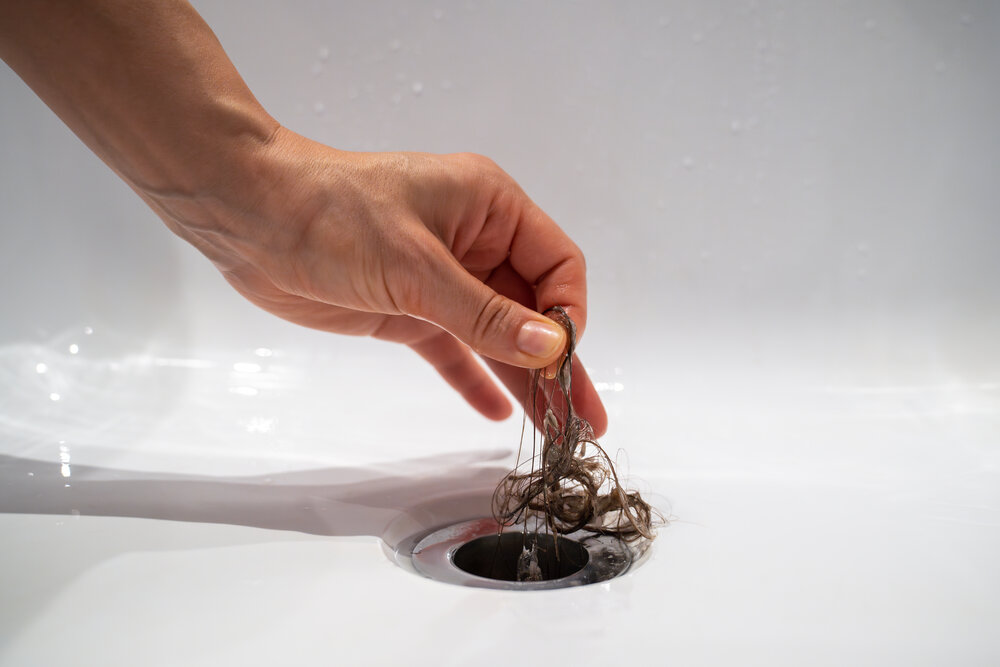How To Fix A Slow-Draining Tub
It’s always a plus when the water drains out of your sink or bathtub at the proper pace. That also makes it a huge pain when it doesn’t. There are a number of reasons your sink or tub can have slow draining: clogs, Loose Hair, a Buildup of Food Scraps, or even bath salts.
The internet is rife with home remedies for slow-draining tubs and for removing blockages, but these often disregard the dangerous chemicals that are mixed in the process. The end goal is for the water to drain out smoothly; you don’t want to end up setting your house on fire from a chemical reaction.
If you are having trouble with your drains, you can hire our plumbers. Professional plumbers use a variety of methods to unclog drains and can quickly clear blockages. Or you can try a few tested methods that should make the unclogging process safe and easy. All you’ll need is a few basic ingredients you can find in your kitchen.
Covering The Drain Cleaning Basics
Dedicated drain cleaners do exist on the market, but they’re harsh on the environment and can even corrode the pipes if overused. It’s more cost-effective – and often simply more effective in general – to mix your own cleaners.
The very first step before you start mixing chemicals is to lift up the drain cover. Often, unsavory items will become lodged underneath, stopping the flow of water. Unclogging a slow bathtub can be as simple as clearing away this debris.
If the problem goes slightly deeper, another low-tech option is to use a plunger. Simply drain out the water, place the plunger over the plug-hole, and pump it about ten times. You should hear the sound of the pressure being released, signaling that air is passing through the pipe.
Fix A Slow Drain Tub With Home Remedies
Baking Soda & Vinegar Drain Unplug Remedy
If neither of these fixes the problem, the most popular and enduring option is the combination of baking soda and white vinegar, often with a bit of table salt thrown into the mix. The individual chemicals of the soda and vinegar react, creating a powerful carbon dioxide gas that scours whatever it touches. The salt is thrown in for a bit of extra scraping power, but it isn’t completely necessary.
Take one cup of baking soda, one cup of vinegar, and one of salt, if you want some extra power, and make sure there’s no water in the tub. Dump the baking soda into the drain, followed by the salt, and finally, the vinegar. If everything goes to plan, you should see a lot of froth; satisfying, if nothing else. This signals that the mixture is scouring the inside of the pipe and hopefully eating away at the blockage. Give it around ten minutes, then flush it out with boiling water and test the tub to see if it drains.
Another popular option involves using the aforementioned baking soda and vinegar combo, but immediately afterward plugging up the tub and filling it with water. You can then release the water, which will flood down the pipe at once, and clear away any of the blockages that remain using sheer pressure.
Using A Plumbing Snake
This should solve the problem in a majority of cases, but it’s not an instant magical fix for all drain issues. A plumbing snake is an inexpensive yet invaluable piece of equipment that consists of a long metal wire with a spike on the end.
This spike can be rotated, either electrically or with a handle. Lower the snake into the pipe and turn the crank. The spike should bore through the blockage, and the twisting motion will cause it to writhe around inside the pipe and scrape any excess off the walls.
How To Unclog A Slow Draing Bathtub
Slow Draining can happen due to many things; dirt, debris, & soap scum, which may lead up to blockages that can clog the drain. Clog Bathtub Drains can be a headache for homeowners, so it is important to know how to unclog a slow-draining tub.
Below, we have highlighted all the steps to unclog a bathtub drain to keep the drains free to flush blocked water.
Use A Screwdriver
Step 1: Find a standard screwdriver to remove the tub stopper. Because Bathtub Drains don’t all have the same stoppers and strainers, it’s sometimes good to follow the manufacturer’s instructions for removing them.
Unscrew the bathtub drain stopper counterclockwise if it is attached through a screw while lifting it up. If there is no screw then you can use your fingernail to lift the stopper. if you need to wrench the screws, then make sure none of them will drop or be lost.
If you are not able to lift the bathtub’s stopper or strainer, to avoid damage or injury, you can consult or call Fischer Plumbing’s professional plumbers to help you unclog the bathtub drain.
Step 2: After lifting up the bathtub drain stopper or strainer, you will find the threaded rod, which is the reason why the bathtub drain gets clogged. It’s a straight rod screwed in the drain that you can simply remove using your fingers. Unscrew it counterclockwise and make sure you also put it aside safely along with the Stopper & Screw.
Step 3: Now, take off the tub stopper base to see the things that have clogged your bathtub drain. Wear gloves and grab a plier to take off the clogged things from the bathtub drain. Also, take a polythene bag to empty the clogged things from the bathtub drain.
Step 4: Now next step is to flush the drain by using some natural drain remedies. You can use the below home remedies to unclog a bathtub drain.
Use Boiling Water
Shampoo and soap can cause a gunky buildup to clog your bathtub drain. To combat the problem, boil a pot of water on the stove and slowly pour it down the drain.
While this tip might not work for all types of clogs, hot water can dissolve most soaps fairly quickly. Try this method first to see if it unclogs the drain, and if not, it’s time to move on to another method.
Use A Plunger
You may have a question in mind: How do you fix a clogged bathtub drain with a plunger? This is not a tool that is usually used by homeowners. A plunger is mostly used by professional plumbers to plunge the drain, and it is something that may not be available at your home.
A plunger is one of the most effective tools used to clear a bathtub clogged drain. How much you will succeed in clearing the clog will depend on the size and design of a drain.
To clear a slow bathtub drain using a plunger, you need a small amount of petroleum jelly. Before using the plunger, add some water to the bathtub and put some petroleum jelly around the rim of the plunger to create a strong seal. Then, start plunging out the clogged drain.
Use Baking Soda & Vinegar
Some people prefer to use natural drain cleaning remedies instead of chemical cleaners to unclog bathtub drains. My favorite is baking soda and vinegar.
Take 2 tablespoons of baking soda & mix it with the same quantity of vinegar. Now pour the mixture down the drain and let it settle for at least 10 minutes.
Now you need some hot water to flush down the drain. Remember, the mixture of baking soda and vinegar, along with hot water, will only help dissolve mild clogs.
Try A Plumbers Snake
Plumber’s snakes are among the best clog-removal tools. They are mostly used by plumbing professionals. They are easy to use and very effective.
Push the snake down the drain slowly to snake the bathtub drain. Don’t stop until you have reached the clogged material.
Twist the handle of the snake and try to stick the clog around the plumber’s snake auger. When you feel the handle is getting harder to turn, push it out of the drain.
Start turning the snake’s handle until it comes back up and out of the drain. Once you’re done, run some water to test the drain to confirm that the clog is completely removed.
A slow-draining tub can be frustrating, so it’s important to fix it immediately. The above methods are all tried and tested. For heavy drain clog problems, you may need professional hydro jetting services. You can consult Fischer Plumbing for drain cleaning services in different areas throughout King & Snohomish county.

Call The Professionals
Call Fischer Plumbing Right Away And Get The Best Sewer Line Repair Service At Your Doorstep.




